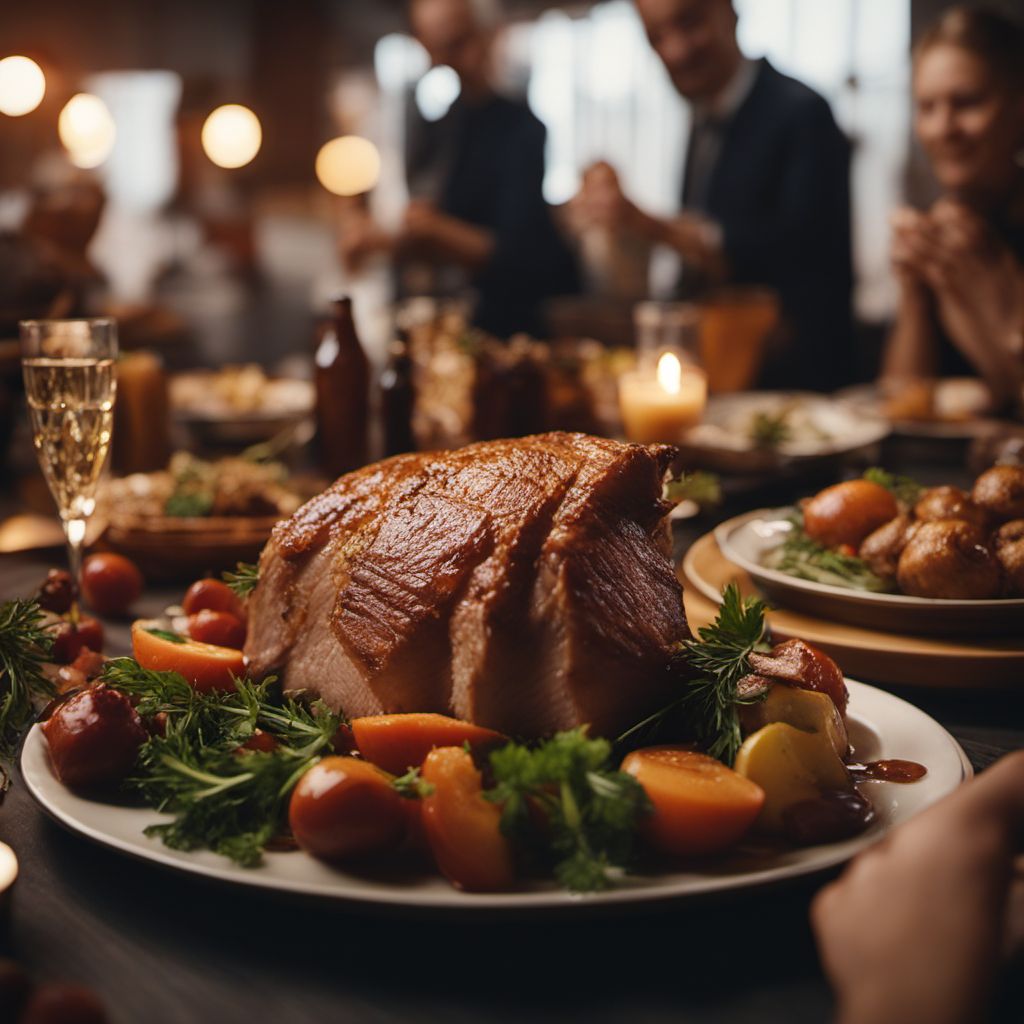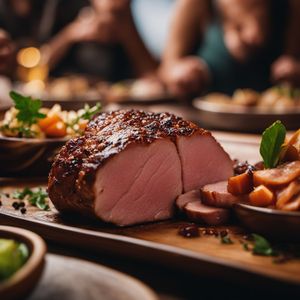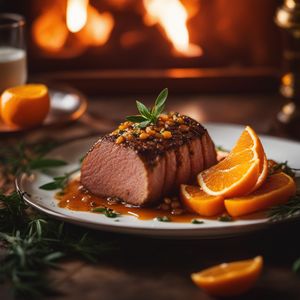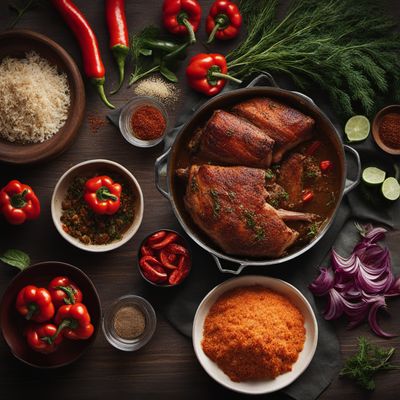
Dish
Flæskesteg
Roast Pork
Flæskesteg is made by seasoning a pork roast with salt and pepper and then roasting it in the oven until the skin is crispy. The dish is typically served with boiled potatoes, red cabbage, and gravy. The pork is usually sourced from local farms and is of high quality. The dish is a staple in Danish cuisine and is enjoyed by many during the holiday season.
Origins and history
Flæskesteg has been a part of Danish cuisine for centuries and is a traditional dish that is often served during Christmas time. The dish is believed to have originated in the Middle Ages when pigs were a common source of food for Danish farmers. Today, the dish is still popular and is enjoyed by many during the holiday season.
Dietary considerations
Flæskesteg is not suitable for vegetarians or vegans. It is also not recommended for individuals with pork allergies or those who follow a kosher or halal diet.
Variations
There are many variations of Flæskesteg, but the most common is the traditional recipe that consists of roasted pork with crispy skin. Some variations include adding herbs and spices to the pork before roasting or serving the dish with different side dishes.
Presentation and garnishing
Flæskesteg is typically served on a platter with the pork roast in the center and the side dishes arranged around it. The dish is often garnished with fresh herbs and spices.
Tips & Tricks
To ensure that the pork skin is crispy, it is important to dry it thoroughly before roasting. This can be done by patting it dry with paper towels or leaving it uncovered in the refrigerator for a few hours before cooking.
Side-dishes
Flæskesteg is typically served with boiled potatoes, red cabbage, and gravy. Other side dishes that can be served with the dish include pickled beets, carrots, and onions.
Drink pairings
Flæskesteg pairs well with a variety of drinks, including beer, red wine, and aquavit.
Delicious Flæskesteg recipes
More dishes from this category... Browse all »

Afelia
Cypriot cuisine

Apáki
Greek cuisine

Arista
Italian cuisine

Arrosto all'arancia
Italian cuisine

Arrosto di maiale con latte
Italian cuisine

Asado de boda
Mexican cuisine

Babi guling
Balinese cuisine

Babi masak tomat
Indonesian cuisine



